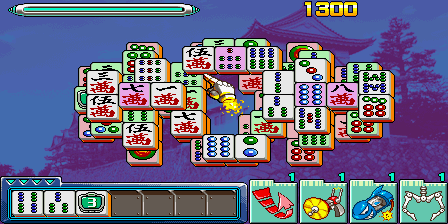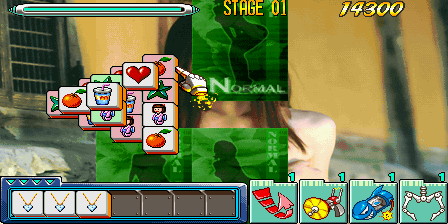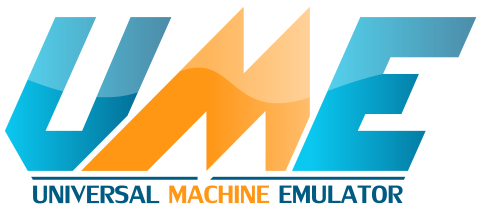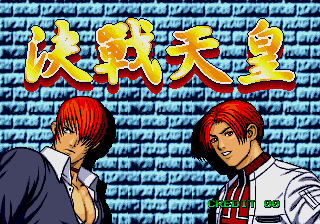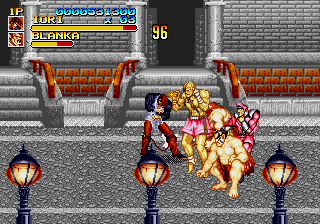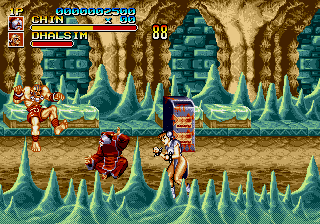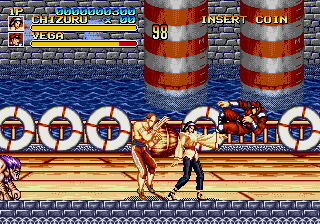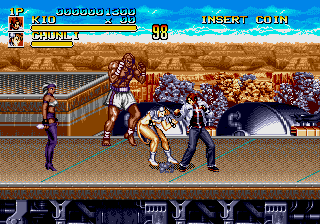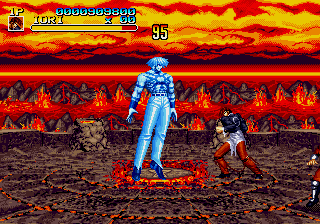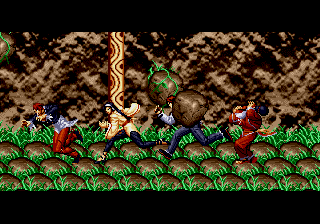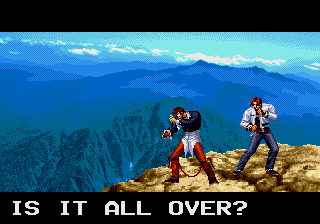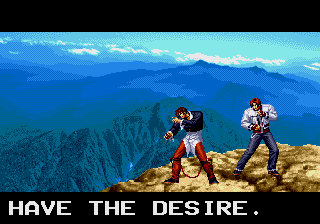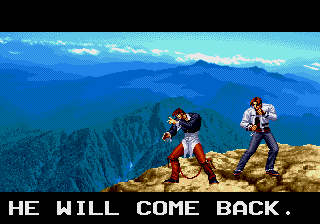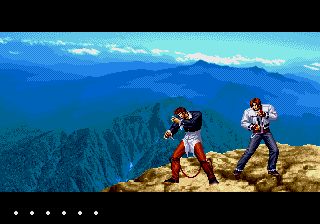I’m going to write this and post bits in real-time, keep having ideas for something like this, but never finding time to lump them all together
Boulderdash, some say it’s a genre in it’s own right, something completely original which sprung out of nowhere, but is it?
Both Dig Dug, and especially Mr. Do offer almost exactly the same digging tunnels experience, and the same basic boulder falling / crushing mechanics, right down to the boulders only falling once you move away from directly underneath them.
While the gameplay is Dig Dug has different objectives Mr Do. even sees the primary goal as collecting a number of items in the level in order to clear it.
Then you’ve only got to look at something like The Pit, which came out before even either of those, has the digging mechanic, boulders, and even has you picking up diamonds as well as the maze-like structure and ‘which is the safest route’ puzzle mechanic a good 2 years before Boulder Dash surfaced.
So, hardly an original game really is it? It’s just a combination of existing elements, a natural progression onto a larger scrolling playfield, and some further tweaks to the game rules (falling collectibles, rocks which stack up instead of just breaking)
That said, I like Boulder Dash, and when I look at the Arcade conversions of it I can’t help but feel they leave a lot to be desired.
First up you have the Max-a-flex version. This is the original Boulder Dash game by First Star Software, the Atari 800 version to be precise. The problem is it’s *too* much the original game. It hasn’t been adapted for arcade use at all, it merely has a coin based timer bolted on which doesn’t even have a proper display connected to it. It’s not a real arcade game at all, just a lazy port which cripples a perfectly good version of the game into being time-based rather than skill based, because no amount of playing skill can stop a fixed timer from expiring.
Then you have the two Data East versions. The first was released on the obscure Deco Cassette System, it’s painfully slow, has laggy controls, very ordinary graphics, and poor scrolling compared to the Max-a-flex version. Overall it’s just not a great deal of fun to play. It’s a real arcade game at least, but not a very good one, especially not for 1985.
The 2nd Data East version was released 5 years later and is the only proper 16-bit arcade version of Boulderdash. The game looks a lot better, but again it just feels rushed, for lack of a better word. There’s a lot going on with the graphics, a fake 3d look to the blocks, you even have a map in the corner, but then there are odd choices too, like the scrolling clouds in the background, what sense does that make? Also things like the scoring system haven’t had any thought put into them at all, the ‘high score’ table actually just shows the scores of the last couple of people to play the game, it isn’t an actual high score table at all! It’s not the *worst* version I’ve played, but I really don’t like the mazes (too many small, pointless levels and ones which just seem closer to a random spray of objects) and the graphical modernizations do nothing for me at all. It’s fairly fast, and has a good variety of enemies, although things like the fades are badly programmed and look ugly even on real hardware (again pointing at it being rather rushed) It’s just one of those games you’re left thinking could have been a LOT better.
Then we’re left with the Kyle Hodgetts efforts; Diamond Run, Dangerous Dungeons (plus the bootlegs Toffy and Super Toffy) and the unfinished Diggerman. Kyle is generally known for his god-awful conversions of other games, his god-awful redemption games, and a couple of other unspeakable titles, but it looks like he noticed the same thing, a lack of good arcade verisons of Boulderdash.
His first effort is Diamond Run from 1989, a conversion of Ghosts and Goblins, which retains the G&G music giving for a rather odd sounding Boulderdash clone. The game is slow, and ugly but throws in some nice ideas from the very first level, ultimately it just becomes too tedious to play tho.
Dangerous Dungeons was the follow-up, this time a Double Dragon conversion. Released in 1992 it’s actually the most recent of the released Boulderdash games (if you don’t count the Korean hacks of it) The graphics have been touched up from Diamond Run and the gameplay is a lot faster, and while it is still very much an 8-bit game with 8-bit graphics it does play faster this time around, although it’s not perfect. Like Diamond Run it has various elements not present in the original game, you start with some sticks of dynamite you can place to blow things up bomberman style, and there are encased diamonds which must be hit by a rock before they can be collected. The bootleg Toffy is almost identical with a changed title screen, while Super Toffy reworks the graphics again and adds adult cutscenes! Of all the Boulderdash arcade games this is probably the one I enjoy the most, but again it’s a shame it’s so slow, and unpolished looking, especially for a 1992 game but the Double Dragon hardware was rather awful, just look how slow the original game is!
The final KH game is Diggerman, although it’s generally considered unfinished, and unreleased despite widespread availability. As a result of this you’ll reach levels which can’t be completed fairly quickly. Again it builds on Dangerous Dungeons, offering basically a cleaned up, faster version of the same game. The was based on the NeoGeo platform, and uses Face’s Gururin as a base which is no doubt why you main character is taken straight from that. It doesn’t really feel like a 16-bit game, and considering it was scheduled for release around 2000 it looks even more dated for period than many of the other efforts.
So despite the early roots I don’t really think the ‘Boulder Dash’ style of game has ever been well represented in the arcades beyond those initial incarnations of Dig Dug and Mr. Do which are both timeless classics. Understandably having to update an entire full level of boulders and diamonds falling everywhere is a significant amount more strain on an 8-bit system than knowing you’re only ever likely to have one apple / boulder falling at a time but even basic things like the presentation values have been sorely lacking.
For the KH stuff that’s understandable, they’re effectively indie games in the arcade, at a time when arcades were big-budget but the Data East stuff is a real shame and a missed opportunity to create something really special.
The most surprising part is how huge both games were on home platforms; Boulder Dash was ported all over the place, the Spectrum had several official versions, a level editor, and numerous other packs available for example and the game was a staple ‘must own’ game for most 8-bit computers, as well as being available on 16-bit machines such as the Amiga and Atari ST.
The games also had huge communities around them, with many unofficial versions springing up. My personal favourite on the Spectrum was one called ‘Earth Shaker’ which started life as a game sent in by a magazine reader, then ended up on one of the Covertapes. It’s apparently also had an XBOX 360 release in 2010, although I’m yet to try it because I don’t really like buying non-physical games and it’s digital only. Earth Shaker was fun because it threw many additional elements into the mix, and compared to many Speccy clones of Boulderdash ran remarkably well, looked good, and even had decent sound effects / music. Levels not only had your usual dirt/rock combinations but also Bubbles, Fire and many others which gave the game great variety, it was also a real challenge like all proper Boulderdash games!
Rockford can be considered the official sequel to the game, and was released on many platforms, including the Spectrum which was a very playable port, capturing a good sense of speed, it supposedly had an arcade release, but that’s never surfaced and I don’t hold any hope of it being good quality because it was meant to be on the Amiga derived Arcadia system, which is another of those which cripples your game by time, not skill (and worse still, the maximum allowed playtime is set by the operator on those games)
Speaking of the Amiga you ended up with PD libraries with sections dedicated to custom maps for the game ‘Emerald Mine’, and while that wasn’t my favourite Boulderdash game on the Amiga (I always preferred Balder’s Grove) it shows again that there were a huge number of fans of the game.
For some reason the game never made an appearance on popular consoles like the Megadrive, and while it did appear on the NES it seems like another wasted opportunity to produce a high quality 16-bit version of the game.
Recently there have been more versions and more ports of the official game than ever, so at least things are making sense now, although the lack of a genuinely *good* arcade version is something history will always show as missing and that I feel is a real surprise, and a real shame.
There are many one-off, often obscure games which you play and think would have made great arcade games, but few as popular yet never perfectly captured.

